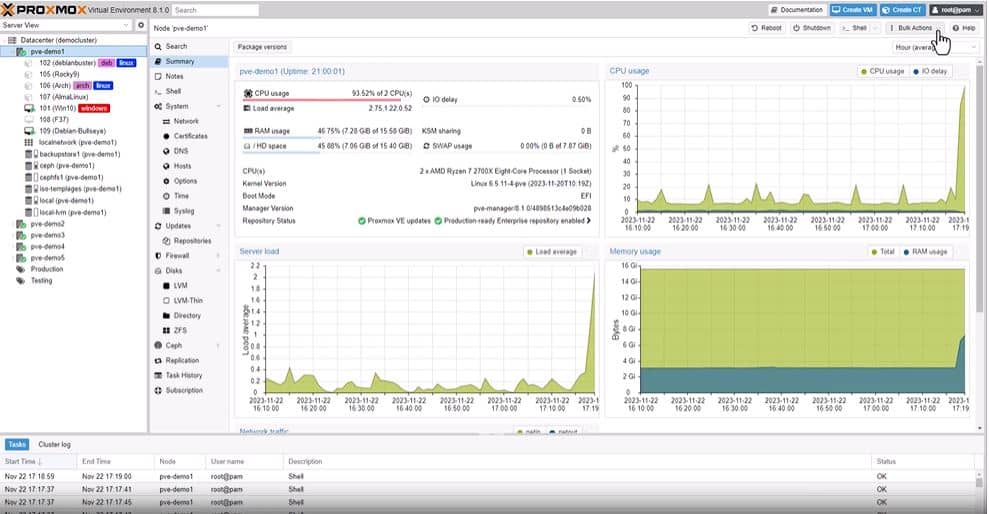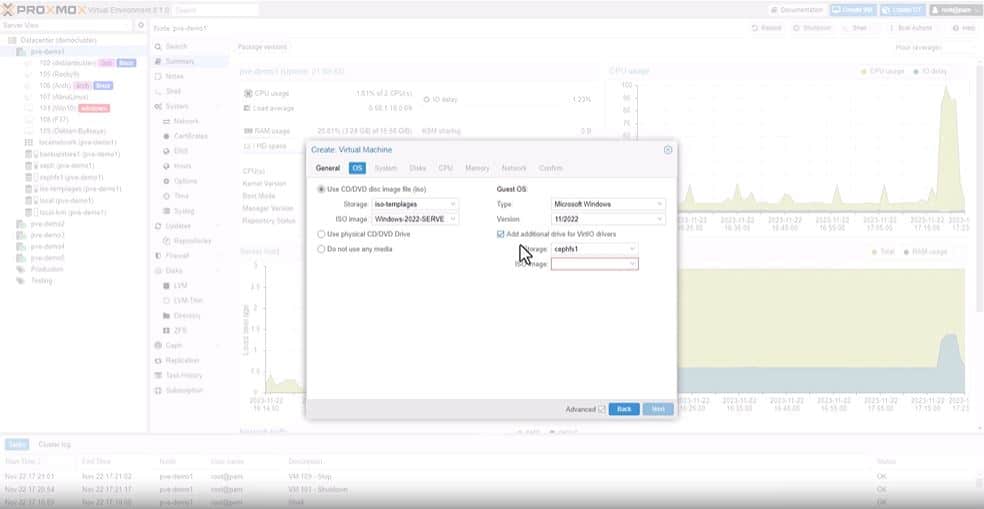Proxmox Server Solutions has officially released version 8.1 of its widely-used open-source server virtualization management platform, Proxmox Virtual Environment (VE). This latest iteration builds upon the solid foundation set by version 8.0, which introduced technologies like QEMU 7.1 and LXC 5, as well as support for Ceph Quincy 17.2.
The new release brings a host of enhancements, bug fixes, and, notably, key features like Secure Boot compatibility and a comprehensive Software-defined Network (SDN) stack. Proxmox VE 8.1 represents a substantial update, enhancing the platform’s security, networking capabilities, and overall performance.

Proxmox VE 8.1 is based on Debian 12.2 (“Bookworm”) and employs the Linux kernel 6.5 as its stable default. It incorporates ZFS 2.2.0, including critical bug fixes from version 2.2.1, ensuring a reliable and high-performance filesystem. The platform remains free and open-source, distributed under the GNU Affero General Public License, v3.
Proxmox VE 8.1 Improvements and Features
One of the primary advancements in Proxmox VE 8.1 is its support for Secure Boot. This security protocol is pivotal in safeguarding the boot process of computers, ensuring that only software with a valid digital signature is executed during startup. With the inclusion of a signed shim bootloader, Proxmox VE can now be seamlessly installed in environments where Secure Boot is active, marking a significant step in enhancing the platform’s security capabilities.
Another highlight of this release is the integration of Software-defined Network (SDN) technology. Now a core component, SDN in Proxmox VE enables users to create virtual zones and networks (VNets) directly from the web interface. This feature is particularly beneficial for managing complex networking configurations and multitenancy setups. The flexibility and scalability offered by SDN are poised to meet diverse business needs, ranging from private networks on individual nodes to extensive overlay networks across multiple clusters.

Version 8.1 also introduces a new flexible notification system. This system adopts a matcher-based approach for routing notifications, allowing users to define specific targets for different types of notifications. The upgrade offers administrators increased precision in specifying notification rules, leading to more accurately tailored alerts that better align with diverse operational needs.
Continuing its support for leading-edge storage solutions, Proxmox VE 8.1 adds support for Ceph Reef 18.2.0, while maintaining compatibility with Ceph Quincy 17.2.7. Ceph Reef brings improved defaults that enhance performance and increase read speeds, offering a robust and scalable storage backend for virtualized environments.
Proxmox VE 8.1 Availability
As with previous versions, Proxmox VE 8.1 is available for download at the Proxmox website. The ISO includes the complete feature set and can be installed on bare-metal systems. The platform’s user-friendly web interface continues to provide intuitive management capabilities, facilitating both command-line and browser-based administration.
For users of earlier versions, upgrading to Proxmox VE 8.1 is streamlined through the apt package manager.




 Amazon
Amazon